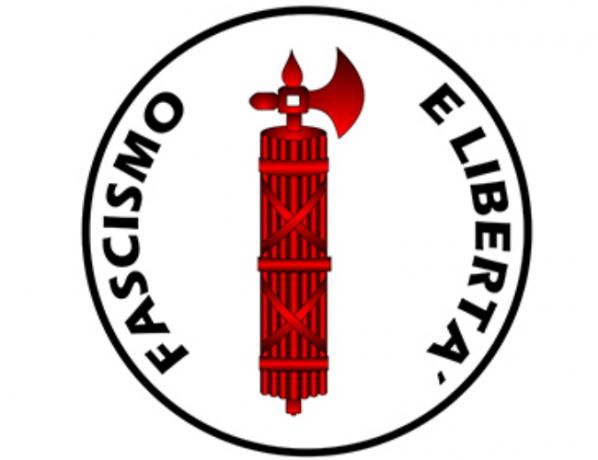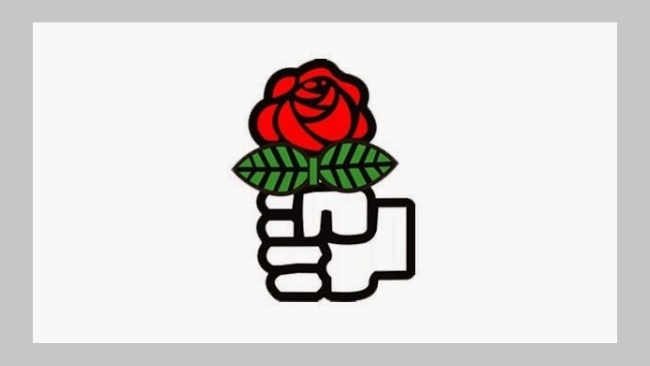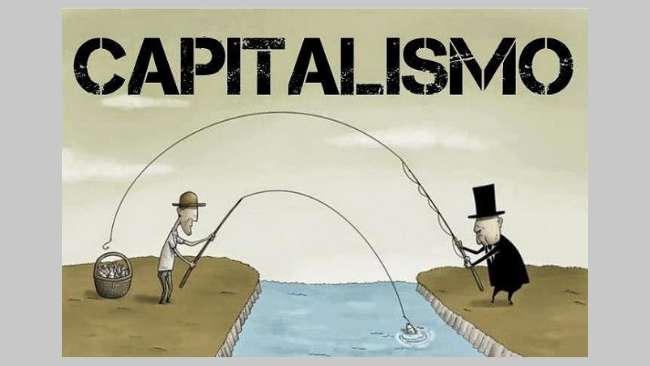Ideology is a set of philosophical, social and political ideas, beliefs and principles that characterize the thought of an individual, group, movement, era or society.
An ideology establishes a group's values and preferences and includes a program of action to carry out the defined goals. The term ideology was coined by the philosopher Destutt de Tracy in the late 18th century.
Below are listed the main types of socioeconomic ideologies and their characteristics:
Classical and Neoliberal Liberal Ideology
Since the 17th century, the ideology of liberalism has been a cornerstone of Western social, economic and political systems.
This ideology was born through the writings of the philosopher John Locke and became even more famous in the 18th century, after the philosopher and economist Adam Smith came to defend it.
The main features of classical liberal ideology are:
- Full faith in the rights, freedom and individuality of each individual;
- Advocates policies and actions aimed at protecting social values;
- Believes that the state needs to have less control over the individual;
- Considers free competition, free trade and freedom of choice as the three basic principles of a free and happy society and the key to progress;
- It strongly opposes the ideologies of totalitarianism, fascism, Nazism and communism, as it believes that they are destructive ideas that annihilate individual initiative and freedom;
- It rejects the idea of total state control or even excessive state control over the individual.
 Painting by Eugène Delacroix, representing the French Revolution, a context in which the classical liberal ideology was adopted and defended.
Painting by Eugène Delacroix, representing the French Revolution, a context in which the classical liberal ideology was adopted and defended.
After globalization, the classical ideology became the neoliberalism.
Known for being a product of classical liberal ideology, neoliberalism emerged during the 1973 oil crisis, through the ideas of economist Milton Friedman.
Like classical liberalism, this new version of the ideology believes that the state should have as little interference as possible in the labor market or even in the lives of individuals.
It is known and criticized by opponents for defending the privatization of state-owned companies and the economic principles of capitalism.
See also the meaning of Ideology, Liberalism and neoliberalism.
Fascist Ideology
Fascism was the political ideology that dominated many places in central and eastern Europe between 1919 and 1945. In addition, it has attracted many supporters in Western Europe, the United States, South Africa, Japan, Latin America and the Middle East.
Europe's first fascist leader was Benito Mussolini. Mussolini created the name of his party inspired by the Latin word fasces, which refers to a bundle of sticks with an ax on their surface, used as a symbol of penal authority in ancient Rome.
The main features of fascist ideology are:
- Extreme militaristic nationalism;
- Contempt for electoral democracy and political and cultural freedom;
- Belief in natural social hierarchy and elite dominance;
- Wish for volksgemeinschaft - German expression translated as “community of the people” -, in which individual interests would be subordinated to the good of the nation.
From the late 1940s onwards, many fascist-oriented parties and movements were founded in Europe, as well as in Latin America and South Africa.
Although some European neo-fascist groups have attracted many followers, especially in Italy and in France, none was as influential as the main fascist parties of the period between. wars.

Symbol of fascist ideology.
See also the meaning of Fascism and Nazism.
Communist Ideology
The ideology of communism is the true opposite of liberal ideology. Based on the philosophy of Marxism, it considers equality between individuals more important than their freedom.
Its origin was still in Ancient Greece, with the ideas exposed by the philosopher Plato. However, the greatest precursors of this ideology are Karl Marx and Friedrich Engels, known for supporting communism through their theories and one of the most famous books: the Communist Manifesto.
The main features of the communist ideology are:
- Advocates the extinction of class struggle and private property;
- Defends a political and economic regime that provides equality and social justice among individuals;
- It believes that the State is an instrument of exploitation in the hands of the rich, so it defends a classless society and the State;
- Believes that the political and economic system must be controlled by the proletariat;
- Strongly opposes capitalism along with its system of "bourgeois democracy";
- It is against free trade and open competition;
- In the sphere of international relations, it condemns and rejects the policies and actions of capitalist states.

Communist flag symbol. The hammer and sickle represent the working class, both agricultural work and industrial work respectively.
Understand more about the meaning and history of Communism.
Democratic Ideology
Democratic ideology emerged at the end of the 19th century, within the proletariat movement, as a variation of socialist ideology.
The Social Democratic Party emerged in an attempt to dose the excesses of capitalism with socialist-inspired policies.
This ideology was especially implanted in Europe after World War II.
The main features of Democratic Ideology are:
- It defends the guarantee of equal opportunities through social policies, without, however, ending private property;
- It believes that the State can intervene in the economy to correct inequalities produced by the free market;
- Aims for social well-being without socialist revolution and without giving up capitalism;
- Its main values are equality and freedom;
- It defends that the State guarantees a minimum standard of living, as a safety net for individuals.
Today, democratic ideology competes with liberalism as the main ideology in democratic countries.
Countries like France, Germany and the Nordic countries favor social-democracy ideology, while the United Kingdom and the United States favor liberalism.
 The red rose being held in one hand is the symbol of democratic ideology and is historically known for anti-authoritarianism.
The red rose being held in one hand is the symbol of democratic ideology and is historically known for anti-authoritarianism.
Capitalist Ideology
Capitalism is an economic system in which private entities own the factors of production. The four factors are entrepreneurship, capital goods, natural resources and labor.
Owners of capital goods, natural resources and entrepreneurship exert control through their companies.
The main features of capitalist ideology are:
- The State intervenes little in the labor market;
- The worker is salaried;
- Owners control the factors of production and earn their income from their own property;
- It requires a free market economy to succeed and distributes goods and services in accordance with the laws of supply and demand;
- There is a division of social classes;
- Private property predominates;
- Theory of Surplus Value: term coined by author Karl Marx, Surplus says about the great economic abyss caused by capitalism, which generates social inequality between employers and employees.
 Charge known for representing a critique of the capitalist ideology: the large landowners collecting the fruits of the labor of the proletariat.
Charge known for representing a critique of the capitalist ideology: the large landowners collecting the fruits of the labor of the proletariat.
Understand more about the characteristics and history of Capitalism.
Conservative Ideology
Conservatism was born in the 16th century, but it became known after the French Revolution, when the Irishman Edmund Burke, father of conservatism, argued vehemently against the ideologies and theories of revolution.
The basic ideas of conservatism are the preservation of the principles and values of social institutions, such as the church, family and community, in addition to the honorable development of individuals.
The main features of conservative ideology are:
- The values: political and economic freedom and social and moral order;
- It is founded on Christian doctrine and has its basis in religion;
- He believes that only the political-legal system guarantees the necessary equality between people;
- Believes in meritocracy, where social inequality is a consequence of differences between individuals and their efforts;
- He believes that any change must be light and gradual.
Learn about the meaning and history of Conservatism.
anarchist ideology
Anarchist ideology emerged in the mid-19th century, after the Second Industrial Revolution. The theorist Pierre-Joseph Proudhon and the Russian philosopher Mikhail Bakunin are considered its greatest creators.
One of the greatest curiosities of this ideology, which already makes its political and social position clear, is the origin of the word. Anarchism originated from the Greek word anarchy, which means "without government".
The main features of anarchist ideology are:
- Establishment of a classless society, formed by free and equal;
- Condemns the existence of the police and armed forces;
- Believes that political parties should be abolished;
- They defend a society based on total freedom, but responsible;
- It is against any type of domination, be it religious, economic, political or social;
- It is in favor of equality, be it race, gender, political, economic and social;
- He does not believe that the State should be extinguished, but fights for it not to represent the will of the people.
The adherents of anarchist ideology seek a social revolution, which is mainly made by workers who feel dominated and oppressed by some kind of authority.

Symbol of Anarchist Ideology.
Understand more about ideology Anarchist.
Nationalist Ideology
It is an ideology based on the premise that individual loyalty and devotion to the nation-state trump other interests, whether individual or group.
The main characteristics of nationalism are:
- It praises the country, its culture, history and people;
- The interests of the nation are above the interests of the individual;
- It defends the culture of belonging and identification with the motherland;
- Believes in preserving the nation and taking care of the country's borders;
- Maintenance of the native language and cultural manifestations.
In Brazil, the nationalist movement was known for its slogans "Brazil, love it or leave it" and "Those who do not live to serve Brazil are not fit to live in Brazil", both created during the 1964 military dictatorship.
 Slogan used during the military dictatorship in Brazil, in 1964.
Slogan used during the military dictatorship in Brazil, in 1964.
Learn more about the history of Nationalism.
See too:
- Characteristics of Communism;
- Communism and Socialism;
- Capitalism and Socialism;
- Marxism;
- Characteristics of Capitalism;
- Democracy;
- Fascist.
